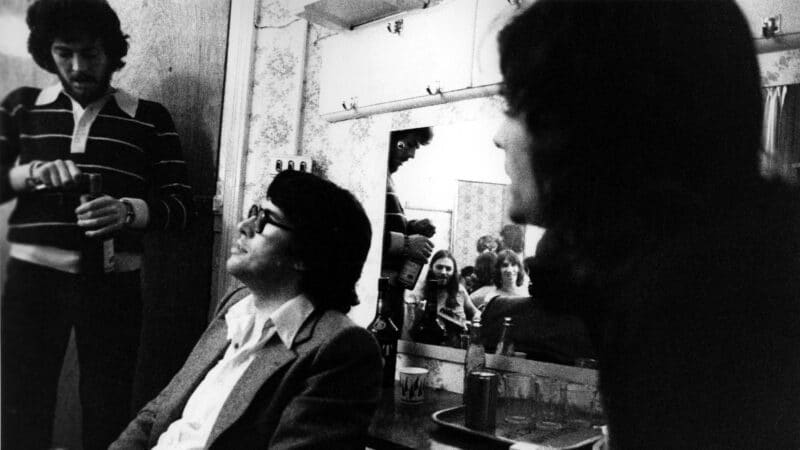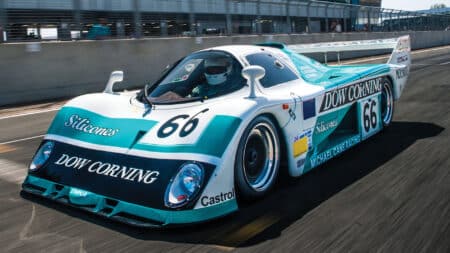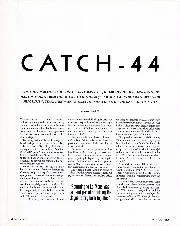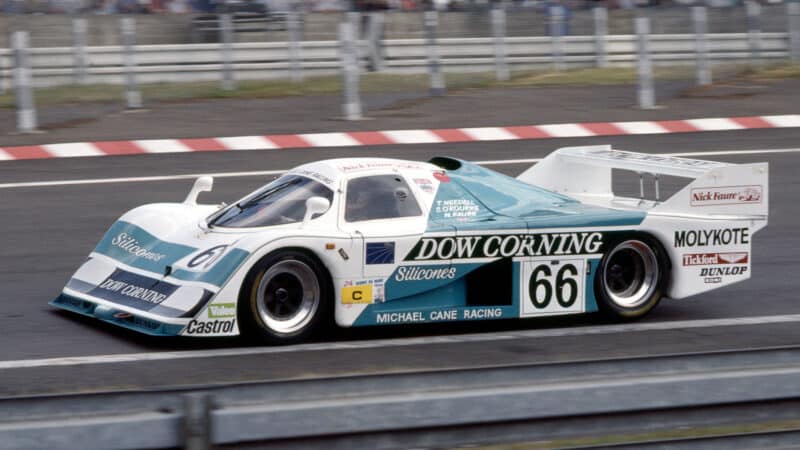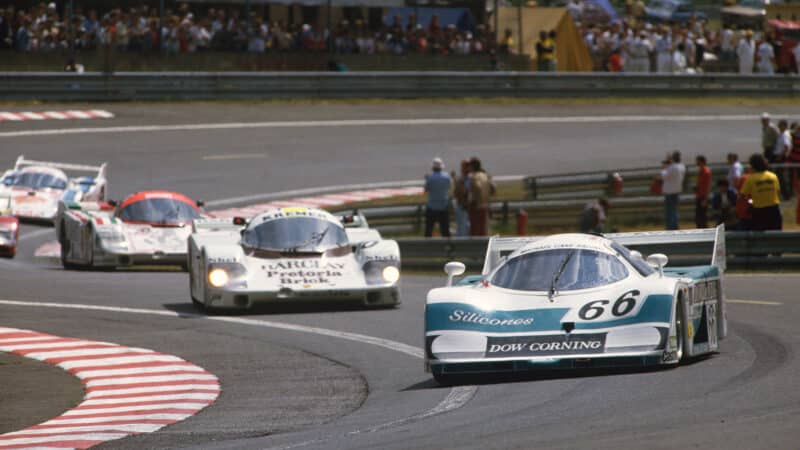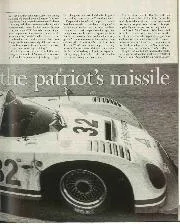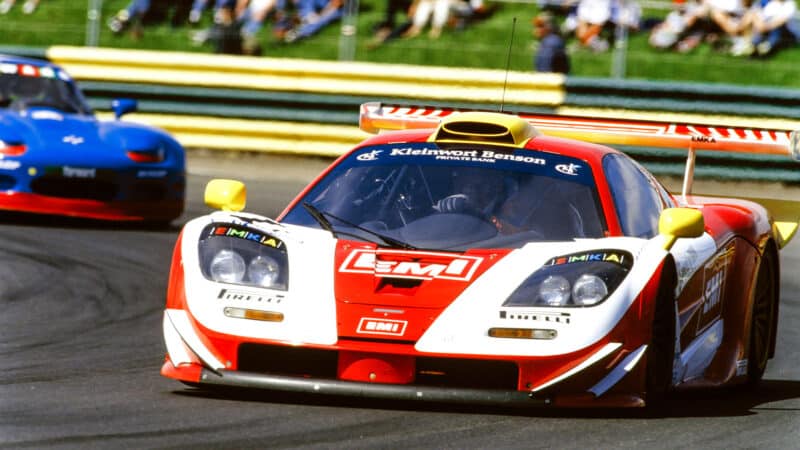“We drove home and stopped for a meal in a pub, and there and then Steve decided he’d like to build his own car.”
The original svelte EMKA 83/1 form was penned by designer Len Bailey, who was known for optimising the Ford GT40 for its Le Mans assault in the ‘60s, taking on Eric Broadley’s original concept.
In the back was the Tickford-tuned 5.3-litre, with 530bhp. Though 120 horses off the 952s, the hope was that better fuel consumption would at least help the EMKA gain a bit of ground back.
“Maurice Gomm built the tub and Protoco did the body work, but we put together the whole car really,” says Cane.
“It was just like my Ensign F1 experience – three men in a workshop building a car out of tin aluminium!” laughs Needell, who also remembers player/manager O’Rourke as “very laidback – very Pink Floyd!”
Donning the livery of music industry sponsor Virgin Records, the bright red car made its debut at the 1983 Silverstone 1000Kms – qualifying over 11sec off Stefan Bellof’s 1min 13.150sec pole time in the Rothmans Porsche 962, but only 1.7sec away from the works Aston Nimrod.
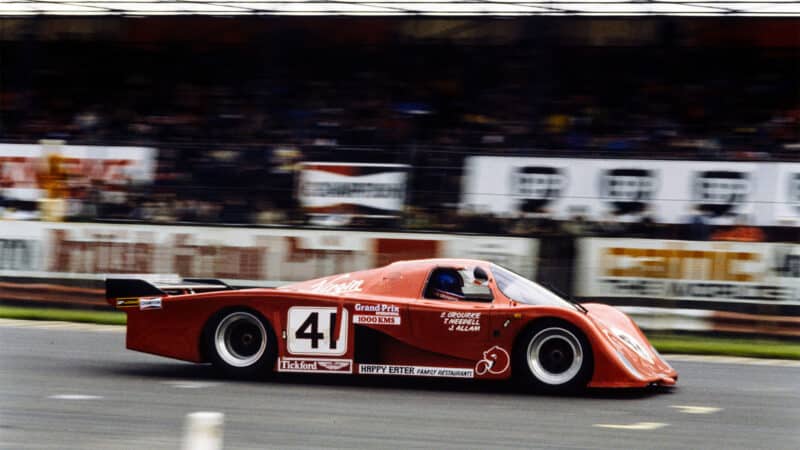
EMKA makes its Silverstone debut in 1983
Getty Images
The EMKA, with O’Rourke and Jeff Allam joining Needell, fared better in the race before a wheel-bearing issue put it out after 165 laps.
“It was always a fun, simple car to drive,” says Needell. “No ground effect, though it pretended to have some.
“But it didn’t go down the straights…”
This became brutally apparent on Le Mans’ formidable Mulsanne. Already down on power, the EMKA found itself being almost-literally blow away by Group C rivals when it showed up for 1983’s biggest sports car race.
Nick Faure was brought in to replace Allam for that event, and related the experience to Motor Sport in 2015.
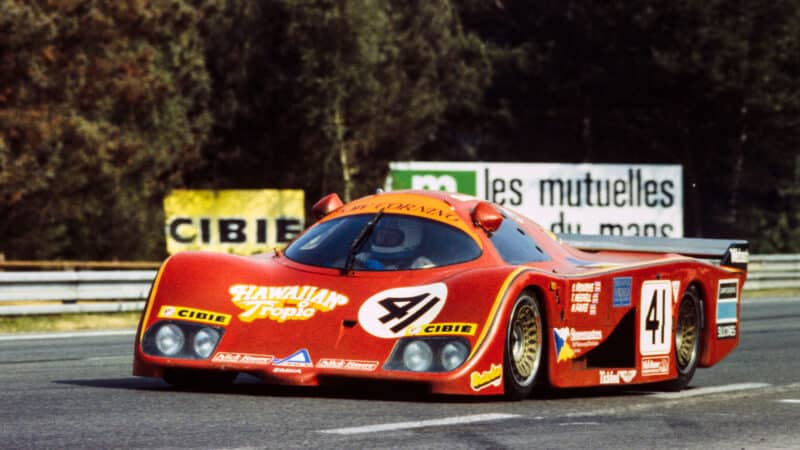
Taking the EMKA to Le Mans in 1983 was a hair-raising prospect
Getty Images
“The car got up to 180mph and just stopped,” he said. “That would be pretty inconvenient anywhere, but at Le Mans without the chicanes? It was completely hopeless. Porsches were pinging past us going 50mph faster, and more…”
Its 3min 42sec qualifying lap was a stonking 26sec off the pole set by the Ickx/Bell 956, but the car made what was a trying race home, finishing 17th out of 20 remaining cars – also being awarded The Motor Trophy for the best finish by a British machine.
The EMKA gang regrouped during 1984 for another crack at Le Mans in ’85, but big changes needed to be made.
Designer Richard Owen, known for the Shrike 2000, was brought in to re-fettle the car – and find more power.

